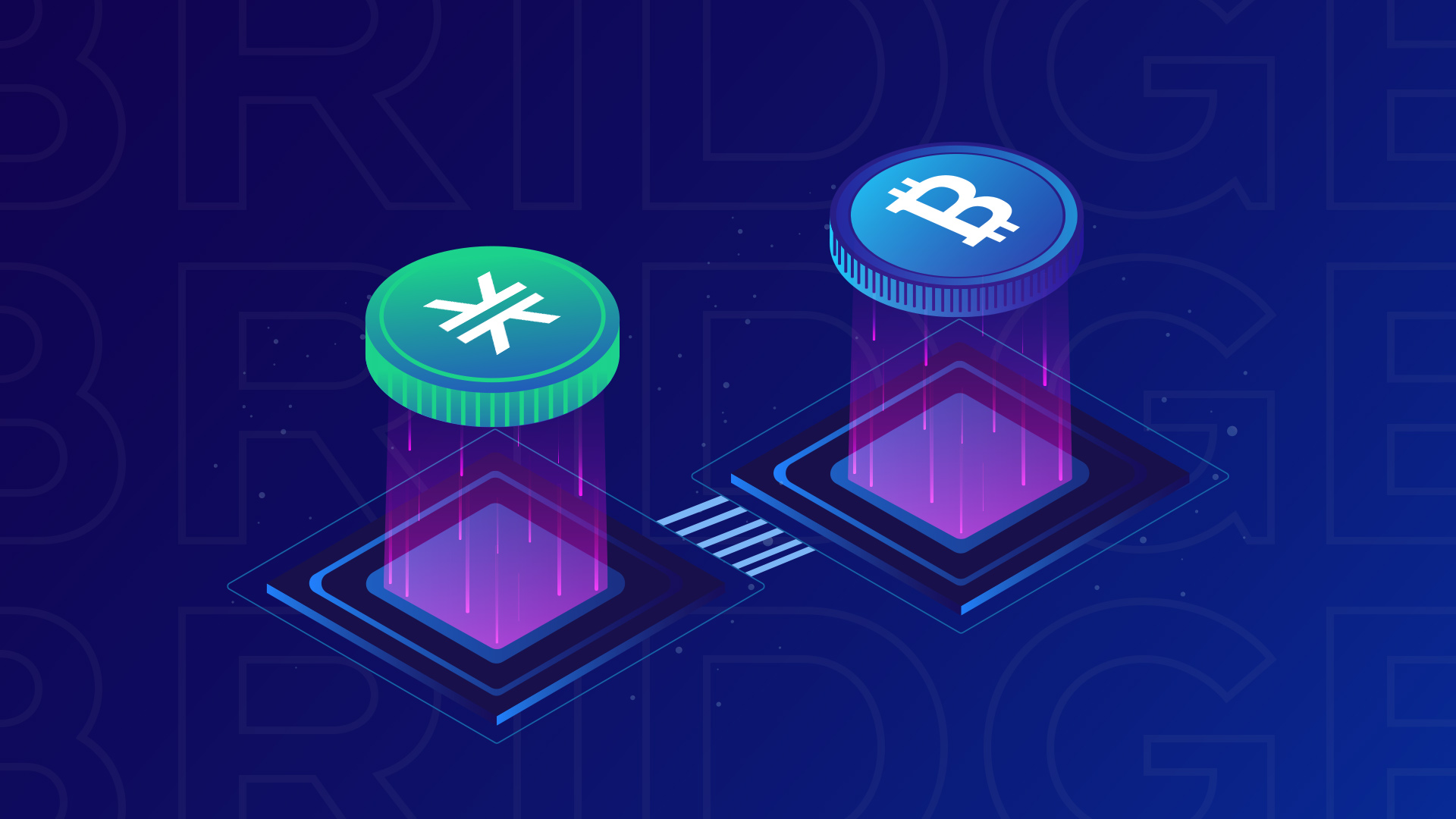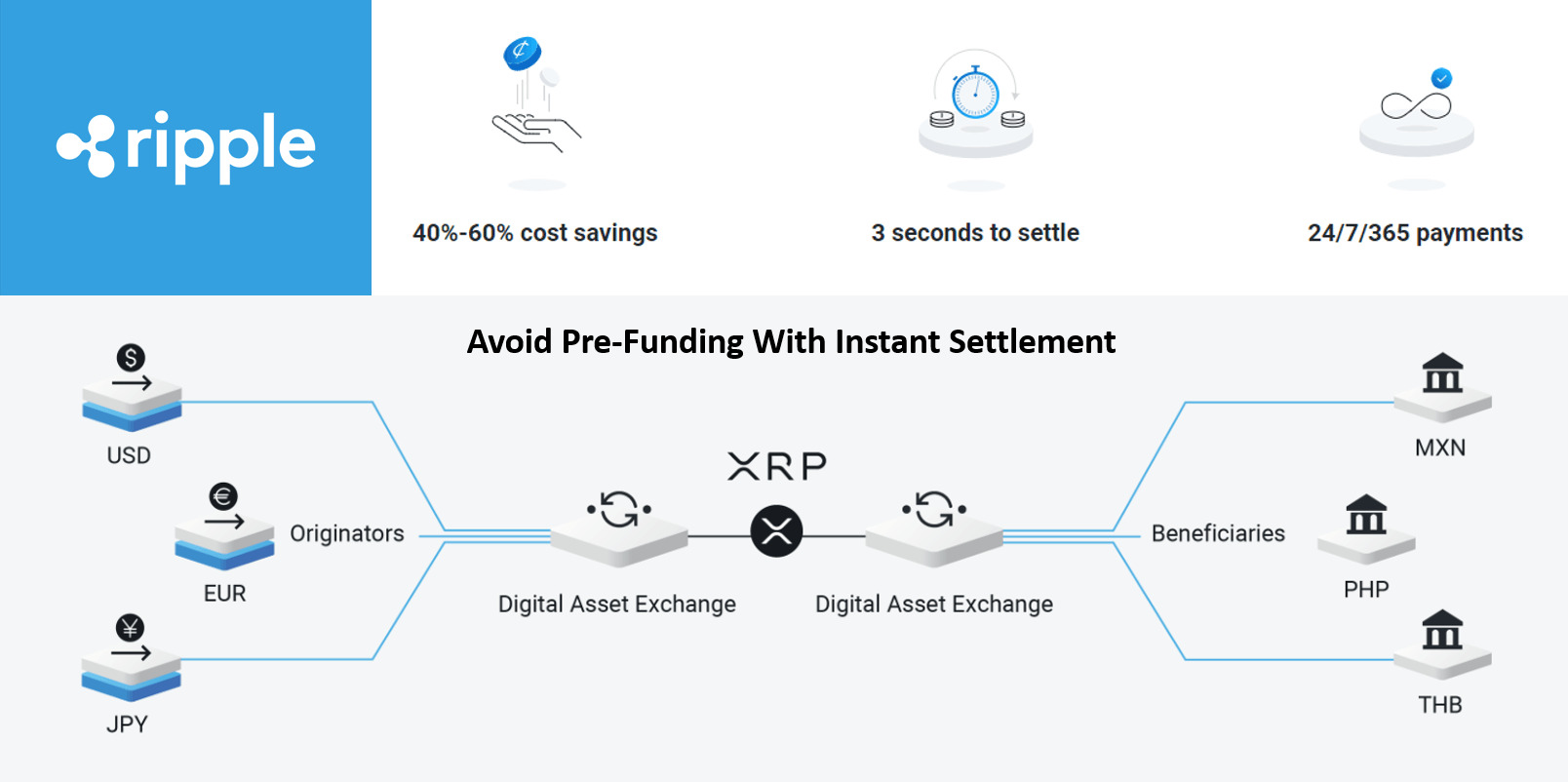Introduction
In today’s digital age, the revolutionary technology known as blockchain has gained immense popularity and is transforming various industries. Blockchain is a decentralized and transparent ledger that allows secure recording, storing, and verification of transactions without the need for intermediaries. This technology has the potential to disrupt traditional systems by offering enhanced security, transparency, and efficiency.
However, despite the numerous advantages offered by blockchain, one of the challenges it faces is interoperability between different networks. This is where blockchain bridges come into play. A blockchain bridge acts as a connection or link between two or more blockchain networks, allowing them to communicate and transfer data or assets seamlessly.
The purpose of this article is to provide a comprehensive understanding of blockchain bridges, including their definition, benefits, working mechanisms, types, and real-world examples. Additionally, we will explore the challenges and risks associated with these bridges and discuss the future outlook for their implementation.
By the end of this article, you will have a clear understanding of how blockchain bridges can revolutionize the way multiple blockchain networks operate together, paving the way for increased efficiency, scalability, and collaboration.
What is Blockchain?
Blockchain is a groundbreaking technology that has been revolutionizing various industries since its inception. At its core, a blockchain is a distributed and decentralized digital ledger that records transactions in a secure, transparent, and immutable manner. Unlike traditional centralized systems, where a single entity controls the ledger, a blockchain is maintained by a network of participants known as nodes.
The key concept behind blockchain is the concept of blocks. Each block contains a list of transactions, and these blocks are linked together in a chronological order, forming a chain. Once a block is added to the chain, it becomes practically impossible to alter or tamper with the data, ensuring the integrity and security of the information stored on the blockchain.
One of the fundamental characteristics of a blockchain is its transparency. Every transaction recorded on the blockchain is visible to all participants, creating a high level of accountability and trust. This transparency, coupled with the decentralized nature of blockchain, eliminates the need for intermediaries and reduces the risk of fraud or manipulation.
Another significant feature of blockchain is its immutability. Once a transaction is added to the blockchain, it becomes permanent and cannot be modified without consensus from the network participants. This attribute enhances the security of blockchain, making it highly resistant to hacking or data manipulation.
Blockchain technology has found applications across various industries, including finance, supply chain management, healthcare, and more. In the financial sector, blockchain has the potential to revolutionize payment systems by enabling faster, more secure, and cost-effective transactions. It also has the potential to streamline supply chain processes, improve data security in healthcare, and simplify property and copyright management.
In summary, blockchain is a transformative technology that provides a secure, transparent, and decentralized platform for recording and verifying transactions. Its key characteristics of transparency, immutability, and decentralization make it an ideal solution for addressing the challenges faced by traditional centralized systems. By harnessing the power of blockchain, businesses and industries can unlock new levels of efficiency, security, and trustworthiness.
What is a Blockchain Bridge?
A blockchain bridge is a mechanism that enables interoperability between different blockchain networks. It acts as a connection or link between these networks, facilitating the transfer of data, assets, or even smart contracts. In simple terms, a blockchain bridge allows different blockchains to communicate and work together seamlessly.
The primary purpose of a blockchain bridge is to overcome the challenge of fragmentation in the blockchain ecosystem. With the growing number of blockchain platforms, each with its own set of features, protocols, and standards, there is a need for a mechanism that enables these networks to interoperate. Blockchain bridges fill this gap by providing a standardized way for blockchains to interact and exchange information.
A blockchain bridge typically consists of two main components: a relay and a connector. The relay is responsible for accepting and sending transactions between the connected blockchains. It acts as a bridgehead, receiving data from one blockchain and forwarding it to another. The connector, on the other hand, is a set of rules and protocols that define how the different blockchains communicate and share data.
By connecting blockchains, a blockchain bridge allows the transfer of assets or data from one blockchain to another. For example, it can facilitate the movement of tokens between different networks, enabling cross-chain transactions. This seamless transfer of assets across various blockchains can unlock a range of possibilities, including decentralized exchanges, cross-chain lending, and interoperable smart contracts.
Moreover, blockchain bridges enable the implementation of decentralized applications (DApps) that can leverage multiple blockchains simultaneously. This opens up new opportunities for developers, as they can combine the unique features and capabilities of different networks to create more powerful and versatile applications.
Blockchain bridges also play a crucial role in scalability. By connecting multiple blockchains, the transaction capacity and throughput of the overall network can be increased. This is particularly important as many blockchain platforms face limitations in terms of scalability and transaction speed. Blockchain bridges provide a solution by allowing transactions to be processed across multiple chains, distributing the network’s load and enhancing overall performance.
In summary, a blockchain bridge is a mechanism that allows different blockchain networks to communicate and work together. By enabling interoperability, these bridges facilitate the transfer of data, assets, and smart contracts between blockchains. They play a vital role in overcoming fragmentation in the blockchain ecosystem, enabling cross-chain transactions, scalability, and the development of powerful decentralized applications.
Benefits of Blockchain Bridges
Blockchain bridges offer several benefits that contribute to the growth and development of the blockchain ecosystem. These benefits include enhanced interoperability, expanded functionality, improved scalability, and increased efficiency.
One of the primary benefits of blockchain bridges is improved interoperability between different blockchain networks. By bridging these networks, blockchain bridges enable seamless communication and data transfer, allowing users to transact and exchange assets across multiple blockchains. This eliminates the need for intermediaries and simplifies the process of conducting cross-chain transactions, ultimately enhancing the overall user experience.
Furthermore, blockchain bridges bring about expanded functionality by unlocking the potential for decentralized applications (DApps) that can leverage multiple blockchains simultaneously. Developers can integrate various features and capabilities of different networks to create more versatile and powerful applications. This not only drives innovation but also fosters collaboration between different blockchain communities.
Scalability is another key benefit of blockchain bridges. By connecting multiple blockchains, these bridges distribute the transaction load across different networks, thereby increasing overall scalability and throughput. This is particularly advantageous for blockchain platforms that face limitations in terms of transaction speed and capacity. With blockchain bridges, the network’s performance can be significantly enhanced, accommodating a larger number of transactions and users.
Another advantage of blockchain bridges lies in increased efficiency. They eliminate the need for intermediaries and central authorities by allowing direct asset transfers between different blockchains. This streamlines the process and reduces costs associated with traditional intermediaries. Additionally, blockchain bridges facilitate faster and more secure cross-chain transactions, enabling users to transact without delays or additional complexities.
Security is a fundamental aspect of blockchain technology, and blockchain bridges contribute to enhancing the security of transactions and data exchanges. By utilizing robust cryptographic algorithms and consensus mechanisms, blockchain bridges ensure the integrity and immutability of transactions across different networks. This strengthens trust among participants and reduces the risk of fraud or manipulation.
Lastly, blockchain bridges promote collaboration and synergy among different blockchain communities. By enabling cross-chain interactions, these bridges encourage knowledge sharing, resource utilization, and innovation across multiple networks. This fosters a more interconnected and cohesive blockchain ecosystem, where ideas and advancements can be shared and implemented more efficiently.
In summary, blockchain bridges offer numerous benefits. They enhance interoperability, expand the functionality of blockchain networks, improve scalability, increase efficiency, strengthen security, and promote collaboration. With these bridges, the blockchain ecosystem can thrive, paving the way for new opportunities and advancements in various industries.
How do Blockchain Bridges Work?
Blockchain bridges enable the seamless transfer of data, assets, and smart contracts across different blockchain networks. These bridges utilize various mechanisms and protocols to achieve interoperability and facilitate communication between blockchains. The functionality of a blockchain bridge can vary depending on its design and purpose, but there are some common principles that underpin their operation.
The first step in the operation of a blockchain bridge is establishing a connection between the participating blockchains. This connection can be achieved through a combination of relay nodes, connectors, and interoperability protocols. The relay nodes act as gateways between the blockchains, receiving and forwarding transactions and data. The connectors, which consist of rules and protocols, define how the different blockchains communicate and share information.
Once the connection is established, the blockchain bridge enables the transfer of data or assets between the connected blockchains. This can be done through atomic swaps, where the assets are swapped simultaneously between the participating blockchains. The bridge ensures that the transaction is valid on both chains before the transfer is completed, ensuring the integrity and security of the process.
Another mechanism used by blockchain bridges is the pegging of assets. This involves locking the assets on one blockchain and creating representations or tokens on the other blockchain. These representations can then be freely transferred within the second blockchain, and when desired, can be redeemed on the original blockchain by destroying the tokens and unlocking the original assets.
To ensure the security and integrity of cross-chain transactions, blockchain bridges may employ various consensus mechanisms and cryptographic protocols. These mechanisms verify the validity of transactions and ensure that they cannot be tampered with during the transfer process. Additionally, smart contracts and auditable on-chain data can be utilized to provide transparency and accountability in the transaction process.
It is important to note that the design and functionality of blockchain bridges can differ based on the specific requirements and characteristics of the participating blockchains. Some bridges may focus on a specific use case or industry, while others may aim to provide a more general-purpose solution. These bridges may employ different protocols and techniques to achieve interoperability and facilitate cross-chain transactions.
In summary, blockchain bridges work by establishing connections between different blockchain networks and enabling the transfer of data, assets, and smart contracts between them. They utilize mechanisms like atomic swaps and asset pegging, along with consensus mechanisms and cryptographic protocols, to ensure the security and integrity of cross-chain transactions. The functionality of a blockchain bridge can vary depending on its design and purpose but ultimately aims to provide interoperability between participating blockchains.
Types of Blockchain Bridges
Blockchain bridges come in various forms, each with its own approach to achieving interoperability between different blockchain networks. These bridges can be categorized into several types based on their architectural design and the methodologies they employ.
1. Relay-based bridges: Relay-based bridges, also known as tokenized bridges, utilize relay nodes to facilitate cross-chain transactions. These bridges rely on a set of validators that hold the native assets on the original blockchain and create corresponding tokens on the destination blockchain. These tokens can then be freely traded and transferred within the destination blockchain, representing ownership of the assets on the original blockchain.
2. Hash-based bridges: Hash-based bridges employ cryptographic hash functions to enable cross-chain communication. This type of bridge utilizes a mathematical proof to lock the assets on the original blockchain and unlock them on the destination chain. The hash of the asset’s lock is used as a reference or proof of ownership, allowing the assets to be transferred securely between the two chains.
3. Bridge-based bridges: Bridge-based bridges, also known as two-way peg bridges, utilize a bridge chain or sidechain to connect multiple blockchains. The bridge chain acts as a intermediary and stores the state of the connected chains, allowing assets or data to be transferred between them. This type of bridge typically utilizes a consensus mechanism to validate transactions and ensure the integrity of the transfer process.
4. Wrapped token bridges: Wrapped token bridges involve the creation of wrapped or synthetic versions of the native tokens on the original blockchain. These wrapped tokens are then transferred to the destination blockchain, where they can be used and traded. The wrapped token represents the original asset and can be redeemed for it on the original blockchain when desired.
5. Atomic swap bridges: Atomic swap bridges enable direct token swaps between different blockchains without the need for an intermediary. This type of bridge relies on a smart contract that ensures that the swap between the assets on different chains happens simultaneously. Atomic swap bridges are typically decentralized and provide a secure and trustless method for conducting cross-chain transactions.
6. Sidechain bridges: Sidechain bridges connect a main blockchain with its associated sidechain, allowing assets and data to move seamlessly between them. Sidechains are separate blockchains that are connected to the main chain, enabling faster transactions and scalability. Sidechain bridges provide a mechanism for linking the main chain with the sidechain, facilitating the transfer of assets and data between the two.
These are just a few examples of the types of blockchain bridges that exist. It’s important to note that the development of blockchain bridges is an ongoing process, and new types and approaches may emerge as the technology evolves. The choice of a specific type of bridge depends on the specific requirements and characteristics of the blockchains being connected, as well as the desired functionality and security considerations.
In summary, blockchain bridges can be classified into different types based on their architectural design and methodologies. These include relay-based bridges, hash-based bridges, bridge-based bridges, wrapped token bridges, atomic swap bridges, and sidechain bridges. Each type of bridge has its own unique approach to achieving interoperability between different blockchain networks, providing seamless transfer of data and assets across chains.
Examples of Blockchain Bridges
As blockchain technology continues to evolve, several real-world examples of blockchain bridges have emerged, showcasing their potential and impact on the blockchain ecosystem. These examples demonstrate how blockchain bridges enable interoperability and open up new possibilities for cross-chain transactions and collaborations.
One notable example is the Polkadot network. Polkadot is a multi-chain platform that aims to provide a secure and scalable infrastructure for decentralized applications. It utilizes a unique blockchain bridge technology called the Polkadot Relay Chain, which connects multiple specialized blockchains known as parachains. The Relay Chain acts as the hub, allowing different parachains to communicate, share data, and transact with each other. This bridge enables interoperability and collaboration between various blockchains, enhancing scalability and functionality.
Cosmos is another prominent example of a blockchain bridge. Cosmos aims to create an interconnected network of different blockchains, enabling seamless token transfers and inter-chain communication. The Cosmos Hub serves as the central hub, connecting various blockchains called Zones through a protocol known as IBC (Inter-Blockchain Communication). This protocol allows Cosmos to achieve interoperability between different blockchains within its network, facilitating the transfer of tokens and data.
Wrapped Bitcoin (WBTC) is an example of a wrapped token bridge. WBTC is an ERC-20 token that represents Bitcoin on the Ethereum blockchain. It is created by locking Bitcoin on the Bitcoin blockchain and issuing a corresponding amount of WBTC on Ethereum. This enables users to have exposure to Bitcoin’s value while benefiting from the flexibility and functionality of the Ethereum network. WBTC can be transferred and traded within the Ethereum ecosystem, providing liquidity and interoperability between the two blockchains.
Ethereum 2.0 (Eth2) is building a bridge between the current Ethereum blockchain and the upgraded Ethereum network. This bridge will enable the seamless transfer of assets, contracts, and data from the existing Ethereum blockchain to Eth2. It aims to address scalability issues and improve performance by integrating shard chains and a proof-of-stake consensus mechanism. The bridge will allow users and developers to migrate assets and smart contracts to the upgraded network, enhancing interoperability and unlocking new opportunities for decentralized applications.
These examples highlight the diverse applications and implementations of blockchain bridges. Whether it is through interconnected network platforms like Polkadot and Cosmos or through wrapped token bridges like WBTC, blockchain bridges play a vital role in facilitating interoperability, enabling cross-chain transactions, and fostering collaboration between different blockchain networks.
In summary, blockchain bridges have become a crucial component of the blockchain ecosystem, enabling interoperability and enhancing the functionality of different networks. Real-world examples such as Polkadot, Cosmos, Wrapped Bitcoin, and Ethereum 2.0 demonstrate the potential and impact of blockchain bridges in enabling seamless transfer of assets, data, and smart contracts between multiple blockchains. As blockchain technology continues to evolve, these bridges will play a vital role in connecting and integrating blockchain networks, unlocking new opportunities for innovation and collaboration.
Challenges and Risks Associated with Blockchain Bridges
While blockchain bridges offer tremendous potential for interoperability and collaboration, they also come with their fair share of challenges and risks. It is important to understand these factors to ensure the successful implementation and operation of blockchain bridges.
One of the primary challenges associated with blockchain bridges is the complexity of connecting and coordinating different blockchain networks. Each blockchain has its own unique protocols, consensus mechanisms, and security features, which can make it challenging to establish a seamless connection and maintain interoperability. Developing standardized protocols and ensuring compatibility between blockchains can be a complex and time-consuming process.
Another challenge is security. Blockchain bridges involve the transfer of assets and data between different networks, making them potential targets for malicious actors. Insecure or improperly implemented bridges can be vulnerable to attacks, such as double-spending, unauthorized transfers, or manipulation of transactions. It is crucial to implement robust encryption, authentication, and consensus mechanisms to ensure the security and integrity of cross-chain transactions.
Scalability is another notable challenge. As the number of interconnected blockchains increases, the transaction load and data traffic on blockchain bridges can significantly increase. This can result in congested networks, slower transaction speeds, and increased costs. Ensuring the scalability and efficiency of blockchain bridges requires careful design and optimization of the underlying infrastructure to handle a high volume of transactions.
Interoperability standards are also a concern in the development of blockchain bridges. With numerous blockchain platforms and protocols, achieving a universal and widely accepted interoperability standard can be challenging. Lack of standardization may lead to fragmentation, where different blockchain bridges operate on incompatible protocols, hindering seamless communication and data transfer between blockchains.
Additionally, regulatory and compliance challenges can arise when implementing blockchain bridges. Various jurisdictions have different regulations surrounding the transfer of assets and data between blockchains. Ensuring compliance with these regulations, such as Know Your Customer (KYC) and Anti-Money Laundering (AML) requirements, can be complex and time-consuming, adding an additional layer of complexity to the operation of blockchain bridges.
Moreover, there is a risk of destabilizing the blockchain ecosystem with the centralization of power in blockchain bridges. If a single bridge becomes a dominant gateway for cross-chain transactions, it could concentrate significant control and influence in the hands of a few entities or individuals. This runs counter to the decentralized ideals of blockchain and could potentially result in a loss of trust and fair control over transactions.
In summary, blockchain bridges face challenges such as interoperability, security, scalability, standardization, regulatory compliance, and the risk of centralization. Overcoming these challenges requires careful planning, robust security measures, cooperation among blockchain communities, and adherence to regulatory requirements. By addressing these challenges, blockchain bridges can truly enable seamless communication and collaboration between different blockchain networks, unlocking new possibilities for innovation and adoption.
Future Outlook for Blockchain Bridges
The future outlook for blockchain bridges is highly promising, as the demand for seamless interoperability and collaboration between blockchain networks continues to grow. As the technology advances and addresses the challenges associated with blockchain bridges, several key trends and developments can be expected.
One significant trend is the emergence of standardized protocols and interoperability frameworks. As the blockchain industry matures, there is a growing recognition of the need for common protocols and standards that enable blockchain bridges to seamlessly connect and communicate with each other. Efforts are underway to develop protocols like the Inter-Blockchain Communication (IBC) of Cosmos and other cross-chain standards that facilitate interoperability. These protocols will lay the foundation for a more interconnected blockchain ecosystem.
Scalability will be another area of focus for future blockchain bridges. With the increasing adoption of blockchain technology, the demand for higher transaction throughput and faster confirmation times will rise. To address this, blockchain bridges will incorporate innovative scaling solutions such as sharding, layer-2 protocols, and off-chain computation. These scalability enhancements will enable blockchain bridges to handle a greater volume of transactions, ensuring seamless cross-chain communication.
Privacy and security will remain essential considerations for blockchain bridges. As the value and potential of cross-chain transactions increase, ensuring the confidentiality and integrity of transferred assets and data becomes paramount. Future blockchain bridges will integrate advanced privacy-enhancing technologies such as zero-knowledge proofs and secure multi-party computation to protect sensitive information. Additionally, developments in quantum-resistant cryptography will enhance the robustness of security measures.
Interoperability between different sectors and industries will be a significant focus for future blockchain bridges. As blockchain technology gains wider adoption, there will be a need to facilitate seamless collaboration between blockchain networks across different domains such as finance, supply chain, healthcare, and governance. Blockchain bridges will enable the transfer of assets and information between these sectors, promoting efficiency, transparency, and innovation.
Another exciting development on the horizon is the integration of Internet of Things (IoT) devices with blockchain bridges. The ability to connect IoT devices to multiple blockchain networks will enable secure, transparent, and automated data exchange between devices and facilitate decentralized decision-making processes. Blockchain bridges will serve as a crucial link to enable the interoperability and integration of IoT devices into the blockchain ecosystem.
Furthermore, advancements in cross-chain governance mechanisms will play a vital role in the future of blockchain bridges. The development and implementation of decentralized governance models will ensure the fair and transparent management of bridge operations, fostering trust and community involvement. These governance mechanisms will enable network participants to have a say in the protocol upgrades, security measures, and overall management of blockchain bridges.
In summary, the future of blockchain bridges looks promising, with trends focusing on standardized protocols, scalability solutions, privacy, cross-sector interoperability, integration with IoT devices, and decentralized governance. As these trends unfold, blockchain bridges will continue to drive innovation, collaboration, and efficiency in the blockchain ecosystem, unlocking the full potential of this transformative technology.
Conclusion
Blockchain bridges are revolutionizing the way different blockchain networks communicate and interact with each other. These bridges enable seamless interoperability, facilitating the transfer of data, assets, and smart contracts between blockchains. With their ability to overcome fragmentation in the blockchain ecosystem, blockchain bridges are unlocking new possibilities for scalability, efficiency, and collaboration.
Through this article, we have explored the concept of blockchain bridges, understanding their definition, benefits, mechanisms, types, and real-world examples. We have seen how blockchain bridges enhance interoperability between blockchain networks, expand functionality through cross-chain transactions, and improve scalability and efficiency.
However, blockchain bridges also face challenges and risks, including complexity, security vulnerabilities, scalability concerns, regulatory compliance, and the risk of centralization. These challenges need to be carefully addressed to ensure the successful implementation and operation of blockchain bridges.
Looking ahead, the future of blockchain bridges is highly promising. The emergence of standardized protocols, advancements in scalability solutions, integration with IoT devices, and enhanced privacy and security measures will further propel the development and adoption of blockchain bridges. Additionally, cross-sector interoperability and decentralized governance models will foster collaboration and innovation within the blockchain ecosystem.
As blockchain technology continues to evolve, blockchain bridges will play a pivotal role in connecting, integrating, and scaling different blockchain networks. Their ability to enable secure, transparent, and efficient transfer of assets and information across chains will revolutionize industries, drive innovation, and pave the way for a decentralized and interconnected future.
In conclusion, blockchain bridges hold immense potential for transforming the way we interact and transact in the digital world. By fostering interoperability and collaboration, these bridges will shape the future of blockchain technology, unlocking new opportunities and possibilities for various sectors. As the technology advances and overcomes the challenges, we can expect to see an increasingly interconnected and efficient blockchain ecosystem, powered by the seamless communication provided by blockchain bridges.

























